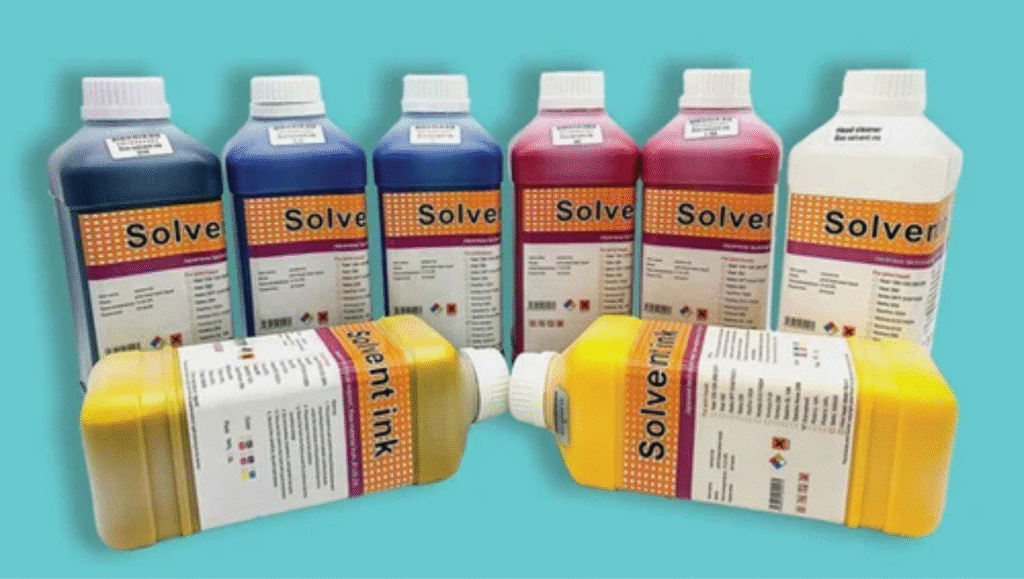
With sustainability fueling innovation in India’s USD 3.5 trillion economy, environmentally friendly eco-solvent inks are revolutionizing the ₹30,000 crore printing sector, providing a cleaner solution to conventional solvent-based inks.
With advantages such as minimal volatile organic compound (VOC) emissions, rich colors, and long-lastingness, eco-solvent inks are making their presence felt in signage, packaging, and textiles, according to a 2025 Future Market Insights report.
The world eco-solvent ink market, worth USD 2.1 billion in 2025, is expected to increase with a 5.33% CAGR to USD 5.5 billion by 2032, according to a 2024 study published by WiseGuy Reports. Nevertheless, India’s MSMEs are challenged with regulatory delays and lack of skill sets that may deter scaling a USD 5 billion local print market by 2030.
Eco-solvent inks, which contain biodegradable solvents such as vegetable oils or glycol, release 2–4% VOCs, unlike petroleum-based inks’ 25–40%, lowering air pollution and occupational health hazards, according to a 2013 Sustainable Business Toolkit report.
Their durability—waterproof, UV-resistant, and scratch-resistant—makes them perfect for outdoor signage, banners, and car wraps, with a lifespan of up to three years without fading, according to a 2023 Electronic Office Systems report.
Eco-solvent ink printers, such as MUTOH’s XpertJet 1682SR Pro with GREENGUARD Gold-certified MS41 ink, are easier to maintain, leading to longer printhead life and reduced costs, according to a 2023 Mobility Foresights report.
In India, these inks are in line with e-commerce-led demand for sustainable packaging, expected to advance at a 3.6% CAGR to USD 604 billion by 2029, according to a 2025 Smithers report.
The market is driven by strict regulations, including the U.S. FDA restrictions on toxic heavy metals and India’s initiative toward low-VOC inks under PM Gati Shakti, according to a 2024 Fortune Business Insights study. In Asia-Pacific, market leadership because of strong demand in China and India, digital printing use for textiles and advertising generates a 6.95% CAGR for solvent inks, including eco-solvent versions, according to a 2023 Bonafide Research study. Government programs such as the ₹50,000 crore Production-Linked Incentive (PLI) scheme benefit MSMEs, which provide 40% of print inputs, and contribute 30% to industry output, according to a 2024 CII report.
The Open Network for Digital Commerce (ONDC) increases MSME market access by 25%, according to a 2024 SIDBI report. Skill India’s 2 million trained staff, although only 5% skilled in cutting-edge print technology, facilitate adoption, according to a 2024 Nasscom report.
Challenges remain. Regulatory clearances for green inks in India take 4–6 years compared to China’s 2 years, slowing innovation, according to a 2024 Nasscom report. MSMEs have compliance expenses of ₹1–2 lakh every month, constraining scaling up. Infrastructural shortages, such as power instability, interrupt production for 20% of units. Volatility in global supply chains, impacting 30% of India’s ink imports, adds pressure, according to a 2024 UNCTAD report. Low ONDC adoption, just 15% of MSMEs being enrolled, and shortage of skills in Tier 2 cities further hamper expansion.
Experts suggest remedies. Subsidies for the Technology Upgradation Scheme can alleviate MSME expenses. Scaling up Skill India’s print technology training can fill gaps. Augmenting 5G and power reliability through PM Gati Shakti will stabilize operations.
Public-private partnerships with IITs can create low-cost, green links. CII-organized campaigns can increase ONDC uptake and sustainability awareness.
Eco-solvent inks, with their performance and environmental benefits, are central to a sustainable future for the printing industry.
With regulatory, skill, and infrastructure hurdles overcome, India can tap this trend to consolidate its print ecosystem in line with a Viksit Bharat by 2030.
